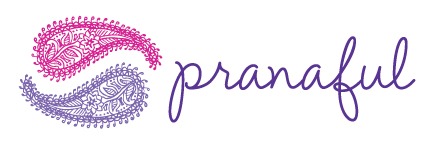This week has been a time of deep reflection on both on food, as well as concepts like freedom and liberation. I led my annual spring cleanse and enjoyed a weeklong kitchari and juice fast, in the company of over 40 people who joined me for the journey. The experience always opens up channels of creativity and introspection for me, and leaves me feeling connected to food in a deeper way.
Kitchari, for those who are unfamiliar with it, is a delicious (and easy-to-make) stew of spiced rice and mung beans that comes to us from India, where it is a staple food in the country’s ancient healing science, Ayurveda. Kitchari is the food your mother would give you when you’re sick, so it’s basically the Indian equivalent of chicken soup, and every bit as satisfying. It’s also the food that Ayurveda has used for hundreds of years both to help the body detox and to restore healthy digestive functioning.
I first discovered kitchari in 2007, on a visit to Los Angeles before I lived here. I went to a party where it was served and it was pretty much love at first bite. I adored the flavor, as well as the look of kitchari, a rich yellow thanks to ample amounts of turmeric. I returned home to Oakland and proceeded to eat kitchari for the next six weeks, even taking it to Burning Man and re-heating individual portions for my meals at the festival. At the end of that period, I was feeling the best I’d ever felt in my adult life. I knew I had stumbled on to something big.
In the years following, I did several kitchari cleanses, eating only kitchari and some complementary chutneys for flavor. I added different seasonal vegetables to my kitchari and delighted in making my own ghee to drizzle on to each piping hot bowl of the magic yellow porridge. I became a kitchari evangelist and prescribed it to my friends, who did things like break caffeine addictions and cut intense sugar cravings. In my own experience, I found that kitchari not only reduced cravings but also helped me to get really clear in my mind – it lifted my mental fog, which I sometimes did not even realize was present until after indulging in a few days of kitchari.
In 2011, realizing the transformative power kitchari held, I started offering organized online group cleanses, and have continued to offer kitchari-based cleanses every spring and fall since. I’ve been amazed to hear the stories participants share of the many ways kitchari helps them to be free, including its power to help people lose weight that they thought was impossible to shed. One woman gave up her daily habit of fast food after eating kitchari and has gone two years without it.
Kitchari is truly a liberating food, helping us to transform various eating patterns and dietary choices for the better. Best of all, a kitchari cleanse, unlike a juice or smoothie cleanse, lets us eat comfort food and have a full belly. It was so liberating to me when I first realized that cleansing didn’t have to mean starvation and deprivation (which had been my experience on other cleanses).
This year, it so happened that the tail end of my spring cleanse butted right up against Passover, which is very fitting given that the holiday is a celebration of liberation. Eating kitchari for a week prior to last night’s seder felt like perfect preparation.
During the seder I attended last night, I came to see matzoh, the cracker-like bread that is a staple in Jewish homes during the holiday, in a whole new light. In my experience, it’s very easy to underappreciate matzoh. It is after all pretty bland and seems to always break apart as you bite into it, scattering crumbs in all directions. Growing up, I always saw matzoh as simply the vehicle to usher something more delicious into my mouth, whether it was charoset (an apple and walnut salad that is part of the seder) or my childhood favorite – cream cheese and raspberry jelly.
The story we all learn about matzoh is that at the time when the Jews had to flee Egypt in order to gain their liberation from the pharaoh who has enslaved them, they hit the road with pretty short notice, meaning there was no time for the women to let the dough rise for their daily bread. The story goes that the Jews brought the dough with them, and during their journey in the hot desert climate, it baked quickly into a crunchy flatbread. And so we eat it today in recognition of their efforts to provide us with freedom today.
Last night, I learned a new interpretation of matzoh’s symbolism, one that I love and that has redefined matzoh for me as another food of freedom. A guest at our seder shared that some people see matzoh’s flat quality as a reminder to not inflate our egos, to be humble. During the eight days of Passover, we can liberate ourselves from the grips of the ego, and each bite of matzoh is a reminder of that.
Happy pesach to those who are celebrating! And congratulations to everyone who is taking part in the spring cleanse who is nearly at the end of our weeklong journey. I’d love to know what foods inspire a sense of liberation for you – let me know in the comments below.

